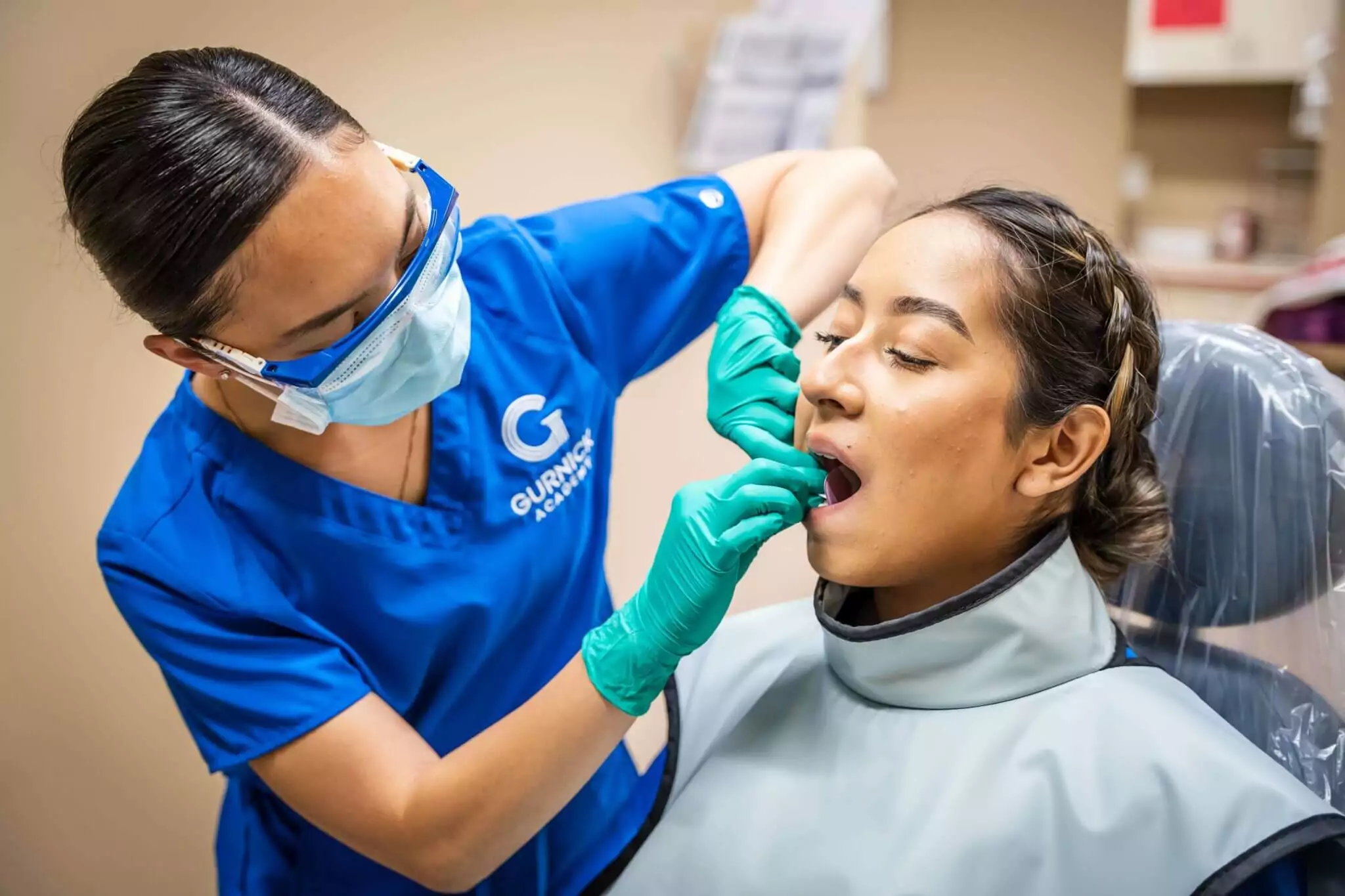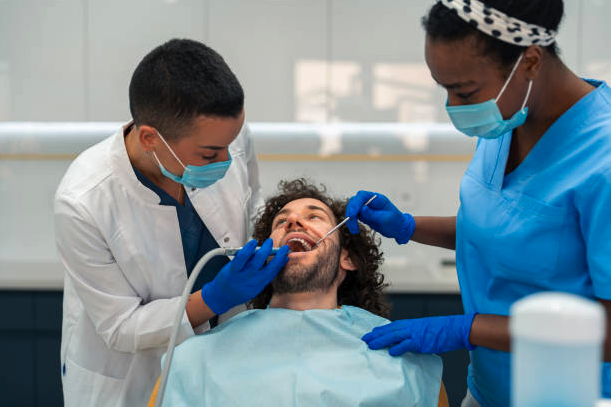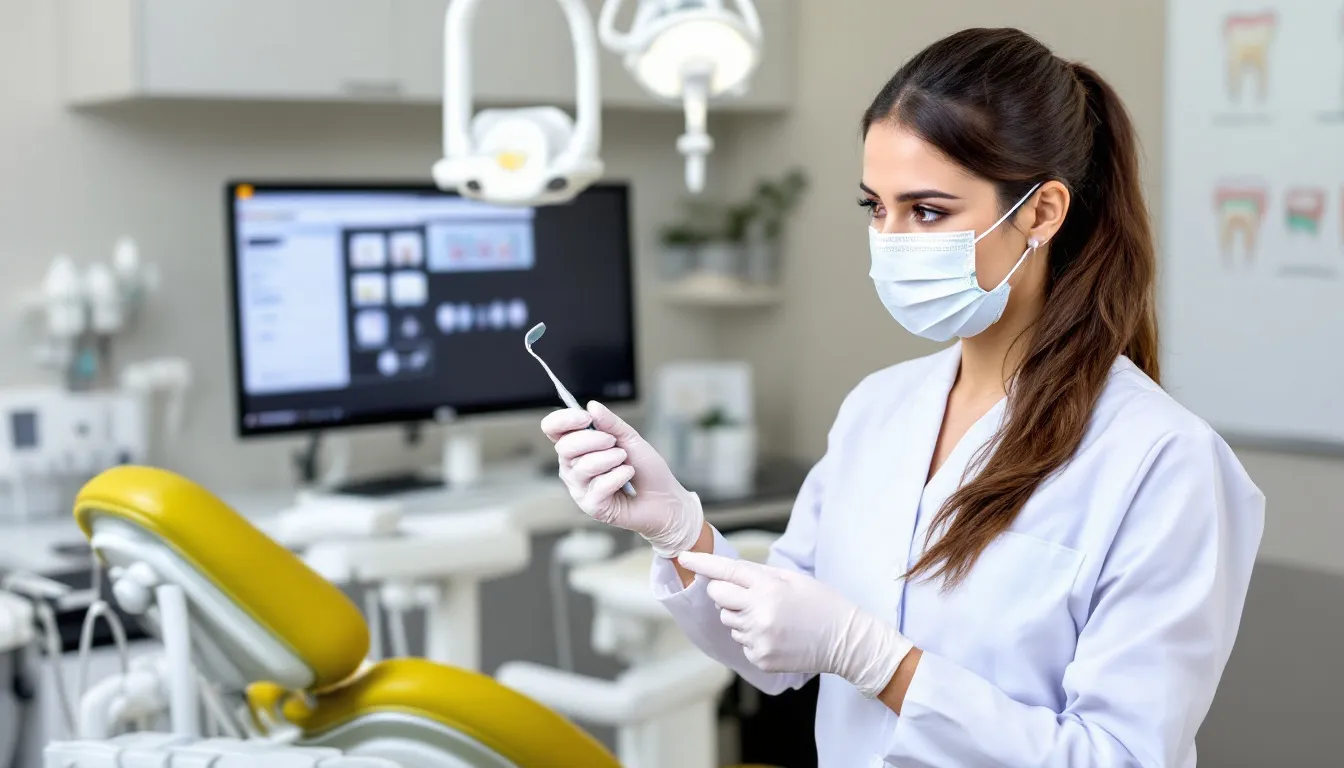Table of contents
Get Started with Kwikly
Get the latest updates, insights, and exclusive content delivered straight to your inbox.
Who it is For
- This guide is for anyone working as a dental assistant, or preparing to become one, who wants clarity on what to wear in a professional dental office. This includes:
- Recent graduates entering their first role
- A student in training
- An experienced assistant looking to refresh your knowledge
- Dental office managers who want to set clear standards for their teams.
Key Takeaways
- Scrubs and lab coats are what you need as a dental assistant - they're durable, comfortable, and look professional while keeping you safe and clean.
- Personal protective equipment (PPE) like gloves, masks, and safety glasses is something you can't skip if you want to stay safe and keep your work environment clean.
- Good shoes - specifically closed-toe and comfortable ones - are crucial when you're spending long hours on your feet and need to stay safe at work.
If you’re working as a dental assistant, chances are you’ve wondered what exactly you should be wearing. Maybe you’re starting your first job, maybe you want to make sure you’re doing things right, or maybe you’re just looking for some clarity on the dress code. At the end of the day, dental assistants wear scrubs and lab coats as part of their daily attire to keep things clean and professional. These pieces of clothing are designed for comfort and practicality - things that really matter when you’re on your feet all day. The right attire not only helps dental assistants stay comfortable but also supports a healthy work-life balance and improves overall quality of life in this demanding career.
This guide will break down the specifics of what dental assistants wear, including protective gear and shoes, and explain why each piece makes sense.
Introduction to Dental Assisting
Dental assisting is a dynamic and rewarding career that puts you at the heart of the dental team. Most dental assistants work in dental offices, supporting dentists and helping patients feel comfortable before, during, and after procedures. The daily tasks of a dental assistant can range from preparing treatment rooms and sterilizing instruments to taking x-rays and assisting with dental procedures. This vital role ensures that dental offices run smoothly and that patients receive the highest standard of care.
To start a career in dental assisting, you typically need a high school diploma and must complete a dental assistant training program. Some states require dental assistants to pass an exam or earn certification, but hands-on training is always a key part of the job. Dental assistants are crucial members of the dental team, making a real difference in the lives of patients and supporting dentists in delivering quality oral health care.
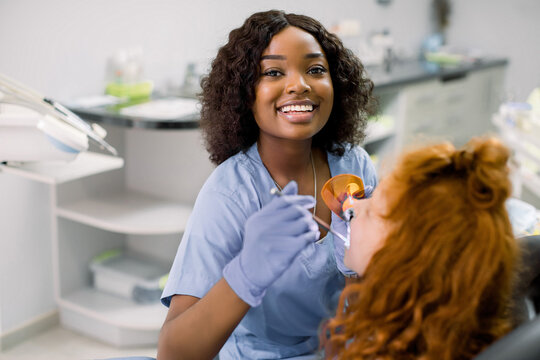
Standard Work Attire for Dental Assistants
The foundation of what dental assistants wear is scrubs. These practical pieces aren’t just about looking the part - they’re essential for keeping things safe and clean in the dental office. Most dental assistants choose scrubs because they give you:
- Durability
- Comfort
- Easy movement These things really matter when you’re doing this job day in and day out. Plus, lab coats are often thrown on over scrubs to:
- Add extra protection
- Look more professional Together, these pieces make sure dental assistants can do their work well while keeping up a professional appearance.
The right work clothes matter because they keep you looking professional, safe, and comfortable in the dental office. Choosing scrubs and lab coats helps create a safe and clean practice environment, which is huge in a dental setting. Scrubs and lab coats also protect dental assistants from exposure to saliva and other debris encountered during daily tasks. Good clothes also help you maintain that professional look.
Let’s dig into the specifics of scrubs and lab coats to see why they’re so important.
Scrubs
When it comes to the day-to-day work of dental assisting, scrubs are your best friend. They're built to handle whatever the job throws at you, giving you durability, comfort, and freedom to move. This stuff really matters when you're working those long shifts that dental assistants often pull. Wearing scrubs helps people identify you as a trained member of the dental team, so everyone knows your position and role in the clinical environment.
Dental assistant scrubs usually cost anywhere from $20 to $60, so they won't break the bank for most professionals. Beyond the price, they're designed for the practical stuff you need to do - like easy access to tools and gloves, which are essential when you're taking care of patients. Scrubs aren't just about looking the part - they're about doing your job well and safely.
Lab Coats
Lab coats are a key part of what dental assistants wear, giving you that extra layer of protection over your scrubs. They keep dental assistants protected from potential contaminants, making sure your clothes stay clean and free from harmful stuff.
Wearing a lab coat also helps you look professional, reinforcing the hygiene and dress standards expected in a dental office. Together, scrubs and lab coats give you solid protection against the daily challenges you face in dental practices.
Protective Gear in the Dental Office
In dental assisting, personal protective equipment (PPE) isn’t just a good idea - it’s something you absolutely need. Dental assistants wear the following protective gear to protect themselves from exposure to infectious materials:
- Gloves
- Surgical masks
- Face shields
- Safety goggles This gear is essential for keeping things safe and clean for both the dental team and patients.
Dental assistants often work in close proximity to the dental chair, which increases their exposure to splashes and contaminants, making protective gear essential.
Scrubs are a big part of this protective setup, giving you a barrier against saliva and debris. Closed-toe shoes are also a must in dental settings to cut down on the risk of injuries and keep things hygienic. You can’t overstate how important PPE is - it’s your first line of defense in the dental office.

Surgical Masks and Gloves
Surgical masks are crucial for protecting against infection and contamination in dental settings. They need to cover both your nose and mouth and should be swapped out after each patient or if they get wet to make sure they're actually protecting you. Medical-grade gloves are also required for patient exams to cut down on the risk of infection.
These safety procedures are key to maintaining high standards of infection control and making sure both patients and dental assistants stay safe.
Protective Eyewear
Protective eyewear is an essential part of a dental assistant’s protective gear. Protective eyewear is especially important during dental treatment to shield the eyes from splashes and debris. You should wear it during procedures that create splashes or sprays to protect against eye injuries. Eyewear with solid side shields is recommended to give you complete protection during dental treatments, so dental assistants can do their work without risking their vision.
Footwear for Dental Assistants
Shoes are another big part of what dental assistants wear. Given the long hours and all the moving around you need to do, dental assistants need shoes that give you both comfort and safety. Most dental assistants go with tennis shoes for their better cushioning and arch support, which help cut down on fatigue during those long shifts. You need to clean and maintain these shoes regularly to make them last longer and prevent odors.
Closed-toe shoes are non-negotiable in dental settings. They prevent injuries and help keep things hygienic. Dental assistant shoes can cost between $30 and $120, making them a smart investment for comfort and safety.
Let's look at the specific types of shoes that work for dental assistants.
Closed-Toe Shoes
Closed-toe shoes are essential in a dental setting to prevent injuries and keep things hygienic. Neutral or solid-colored shoes, like black and white, help you maintain that professional appearance.
This type of shoe is crucial for making sure dental assistants can move safely and comfortably throughout their workday.
Tennis Shoes
Tennis shoes are highly recommended for dental assistants because of their support and protection for your feet during long hours of standing. These shoes give you the cushioning and arch support you need to reduce fatigue and stay comfortable, making them perfect for the demands of dental assisting.
Accessories and Personal Grooming
Beyond clothing and shoes, accessories and personal grooming play a big role in maintaining hygiene and professionalism in the dental office. Dental assistants can wear makeup, but it should be minimal to avoid distractions and keep up that professional appearance. Good grooming and appropriate accessories make sure dental assistants can do their work well while upholding the standards of the dental practice.
In dental settings, the following are preferred to maintain hygiene and prevent distractions:
- Minimal jewelry
- Hair pulled back to prevent obstruction and ensure cleanliness
- Trimmed nails to prevent hygiene issues and ensure effective handling of dental instruments
Jewelry should be minimized because it can interfere with a procedure and compromise safety.
Let’s dive into these aspects for more clarity.
Minimal Jewelry
Wearing minimal jewelry is smart for dental assistants. It prevents distractions and maintains hygiene, making sure jewelry doesn't get in the way of glove use or dental procedures.
Jewelry can cause distractions and make it difficult when wearing gloves, so it's essential to keep it to the bare minimum.
Hair and Nails
Good hair and nail management are vital for dental assistants. Hair should be pulled back to prevent it from getting in the way of work and ensuring cleanliness. Trimmed nails are crucial for preventing hygiene issues and making sure you can handle dental instruments effectively.
Maintaining proper hair and nail care is essential for upholding hygiene standards in a dental practice.
Grooming and Hygiene
Maintaining excellent grooming and hygiene is a must for every dental assistant. A clean, professional appearance not only inspires patient confidence but also helps prevent the spread of infection in the dental office. Dental assistants should always keep their hair tied back and away from their face to avoid any interference during procedures. Wearing minimal jewelry and keeping makeup understated ensures nothing distracts from patient care or gets in the way of safety protocols.
Short, clean fingernails are essential, as dental assistants frequently come into contact with patients’ teeth and oral tissues. Closed-toe shoes, such as tennis shoes, are recommended to protect your feet and maintain a sanitary environment. By following these grooming and hygiene guidelines, dental assistants help create a safe, professional atmosphere for both patients and the dental team.
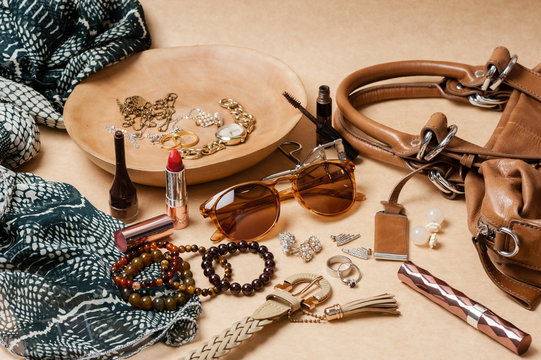
School Attire for Dental Assisting Students
For dental assisting students, dressing the part starts in the classroom. Most programs require students to wear scrubs during training, helping them get used to the professional attire they’ll wear in their future careers. Wearing scrubs to class and clinical sessions not only sets the tone for professionalism but also prepares students for the hands-on nature of dental assisting.
Programs often have specific guidelines, such as requiring closed-toe shoes and keeping hair tied back, to ensure safety and hygiene during clinical procedures. By adopting these habits early, students develop a professional mindset and are better prepared for the demands of working with patients in a real dental office. Dressing appropriately in school helps dental assisting students transition smoothly into their roles as valued members of the dental team.
Professional Appearance and Conduct
A dental assistant’s professional appearance and conduct really impact patient trust and the overall dynamics of the dental team. Key points include:
- Wearing the right uniform helps create a professional image, which is crucial for patient recognition and building trust in the healthcare environment.
- In one office, a consistent dress code helps patients easily identify dental staff and feel comfortable.
- Dental assistants work closely with the dentist to maintain a professional and welcoming environment for patients.
- A dental assistant’s overall appearance needs to look presentable and professional.
- Lab coats are often worn over scrubs to enhance the professional appearance and provide an added layer of protection.
Picking the right pair of shoes is also important for dental assistants to take care of their feet during all that walking. Let’s look at the specifics of business casual attire for interviews and the conduct expected during patient interactions.
Business Casual Attire for Interviews
During regular interviews, dental assistants are often expected to wear business casual attire, which can include professional tops and slacks. Women interviewing for dental assistant positions may choose professional attire such as a blouse and skirt or a tailored suit to present a polished appearance. Checking the dress code with the hiring manager can clarify what to wear to a dental assistant interview.
This makes sure candidates feel comfortable and confident during their interviews.
Conduct During Patient Interactions
Keeping a professional attitude during interactions with patients and the dental team is crucial for building trust and comfort. Dental assistants should always stay calm and respectful during patient interactions to make sure the patient has a positive experience and to uphold the standards of the profession.
Dental Assistants Work Environment
Dental assistants work in a variety of settings, from private dental offices to clinics and hospitals. Most dental assistants work full-time, and their daily duties can include preparing patients for treatment, assisting with dental procedures, and supporting the dental team with a range of clinical and administrative tasks. The work environment is often fast-paced, requiring dental assistants to be organized, adaptable, and attentive to safety procedures.
Effective communication with patients and other dental professionals is essential for providing quality care and maintaining a positive atmosphere in the office. By working together and following strict safety protocols, dental assistants help ensure that every patient receives safe, efficient, and compassionate care.
Cost and Maintenance of Dental Assistant Attire
The costs that come with dental assistant attire can add up, but good maintenance can make these clothes last longer. For a working interview, dental assistants should:
- Wear clean scrubs and closed-toe shoes to keep up that professional appearance.
- Change protective clothing when it’s visibly dirty to maintain safety and hygiene.
- Replace PPE between patients to prevent cross-contamination and maintain hygiene.
Washing scrubs separately from other clothes and using a mild detergent can help maintain their quality and make them last longer. Breaking down the costs of scrubs and protective gear, along with tips for maintenance, gives you valuable insights. Considering the investment in attire, it's helpful to know that the median annual wage for dental assistants reflects the typical earnings in this field and can help put these costs into perspective.
Cost of Scrubs and Gear
The cost of scrubs for dental assistants can range from $20 to $50 per set, depending on the brand and material. Protective gear, including surgical masks and gloves, can add another $10 to $20 per day to overall costs.
These costs are a necessary investment in maintaining a safe and professional work environment.
Care and Maintenance Tips
To maintain hygiene, dental assistants and dental hygienists should:
- Wash their scrubs daily, given their exposure to bodily fluids.
- Use a mild detergent to help maintain the quality of dental uniforms while avoiding harsh chemicals.
- Skip fabric softeners when washing scrubs to maintain the moisture-wicking properties of the fabric.
Tips for maintaining dental scrubs and work attire: For dental offices, maintaining proper hygiene standards can also reduce staff absences and lost revenue. Use our Savings Calculator to estimate your potential savings.
- Treat stains right away with a stain remover before washing to help preserve the appearance of scrubs.
- Air dry dental scrubs instead of using a tumble dryer to minimize shrinkage and maintain fabric integrity.
- Wear closed-toe shoes made of easy-to-clean materials to help maintain cleanliness in work attire.
Training and Education Requirements
Becoming a dental assistant involves specific training and education requirements. Educational programs can vary in length from a few weeks to several months, depending on the type of training you go for. The educational requirements to become a dental assistant vary by state: some require graduation from an accredited program and an exam, while others don’t have formal requirements. Hands-on experience is highly valued, and many dental practices are willing to train new assistants while they work.
Dental assistants can advance their careers by becoming Expanded Function Dental Assistants (EFDAs) or pursuing further education. Looking at certification programs and the benefits of on-the-job training gives you a clearer pathway for career development. The growing focus on preventive care in oral health is increasing the demand for skilled dental assistants.
Certification Programs
Dental assistants have various certification opportunities through the Dental Assisting National Board (DANB). Various certification programs provide essential tools, guidance, and credentials for dental assistant training, including information on the Dentist and Dental Hygiene (DDH) Compact for 2024-2025:
- Accelerated dental assistant programs that can be completed within 10 to 12 weeks
- Certifications such as EFDAs (Expanded Functions Dental Assistants)
- Radiology certification
- Coronal polishing certification
- Nitrous oxide monitoring certification
These certifications can boost a dental assistant's earnings and job market value.
On-the-Job Training
On-the-job training gives dental assistants the chance to learn specific skills and procedures directly in the clinical environment. This hands-on experience is crucial for career development, letting dental assistants gain the practical skills and confidence needed to excel in their roles.
Training with scrubs enhances practice in care and comfort during doctor work courses.
Professional Development for Dental Assistants
Ongoing professional development is key for dental assistants who want to stay current with the latest advancements in dental care. Many dental assistants choose to pursue additional training or certification in specialized areas such as radiography or coronal polishing, which can open doors to new responsibilities and higher earning potential. Attending workshops, conferences, and continuing education courses allows dental assistants to learn about new procedures, tools, and best practices.
With job growth for dental assistants projected at 8 percent from 2023 to 2033, there are plenty of opportunities for advancement in this field. Some dental assistants may choose to specialize in areas like pediatric dentistry or oral surgery, while others may move into roles such as dental office manager or educator. By investing in their education and training, dental assistants can advance their careers and continue to provide top-quality care to their patients.
Summary
At the end of the day, what dental assistants wear plays a huge role in maintaining professionalism, safety, and hygiene in the dental office. From the basic scrubs and lab coats to essential protective gear such as surgical masks, gloves, and eyewear, each piece is designed to make sure you have a safe and efficient working environment. Good shoes, particularly closed-toe and tennis shoes, further support the demanding physical requirements of the job, giving you comfort and reducing fatigue.
Accessories and personal grooming, including minimal jewelry and well-maintained hair and nails, are crucial for upholding the high standards expected in dental practices. The cost and maintenance of dental assistant attire require careful consideration to make sure things last and stay hygienic. Training and education, ranging from certification programs to on-the-job training, give dental assistants the skills and knowledge needed for their career. By following these guidelines, dental assistants can excel in their roles, contributing to the overall success and professionalism of the dental team.
Frequently Asked Questions
What is the typical attire for dental assistants?
Dental assistants typically wear scrubs paired with lab coats, making sure they're comfortable and professional while making it easy to move during their tasks. This attire is designed for durability and protection in a clinical environment.
Why is protective gear important in a dental office?
Protective gear in a dental office is crucial for keeping staff safe against infectious materials and making sure the environment stays sterile. This equipment, including masks, gloves, and eyewear, helps prevent the spread of diseases, protecting both dental professionals and patients.
What type of footwear is recommended for dental assistants?
Closed-toe shoes, particularly supportive tennis shoes, are recommended for dental assistants to make sure they stay safe, hygienic, and comfortable during long periods of standing.
How should dental assistants maintain their scrubs?
Dental assistants should wash their scrubs daily with a mild detergent and skip fabric softeners to make sure they stay hygienic and last longer. Plus, treating stains right away and air drying can further extend the lifespan of their uniforms.
What training is required to become a dental assistant?
To become a dental assistant, completing a certification program from the Dental Assisting National Board (DANB) is often recommended, along with gaining hands-on experience through on-the-job training. This combination gives you the essential skills needed for the role.




